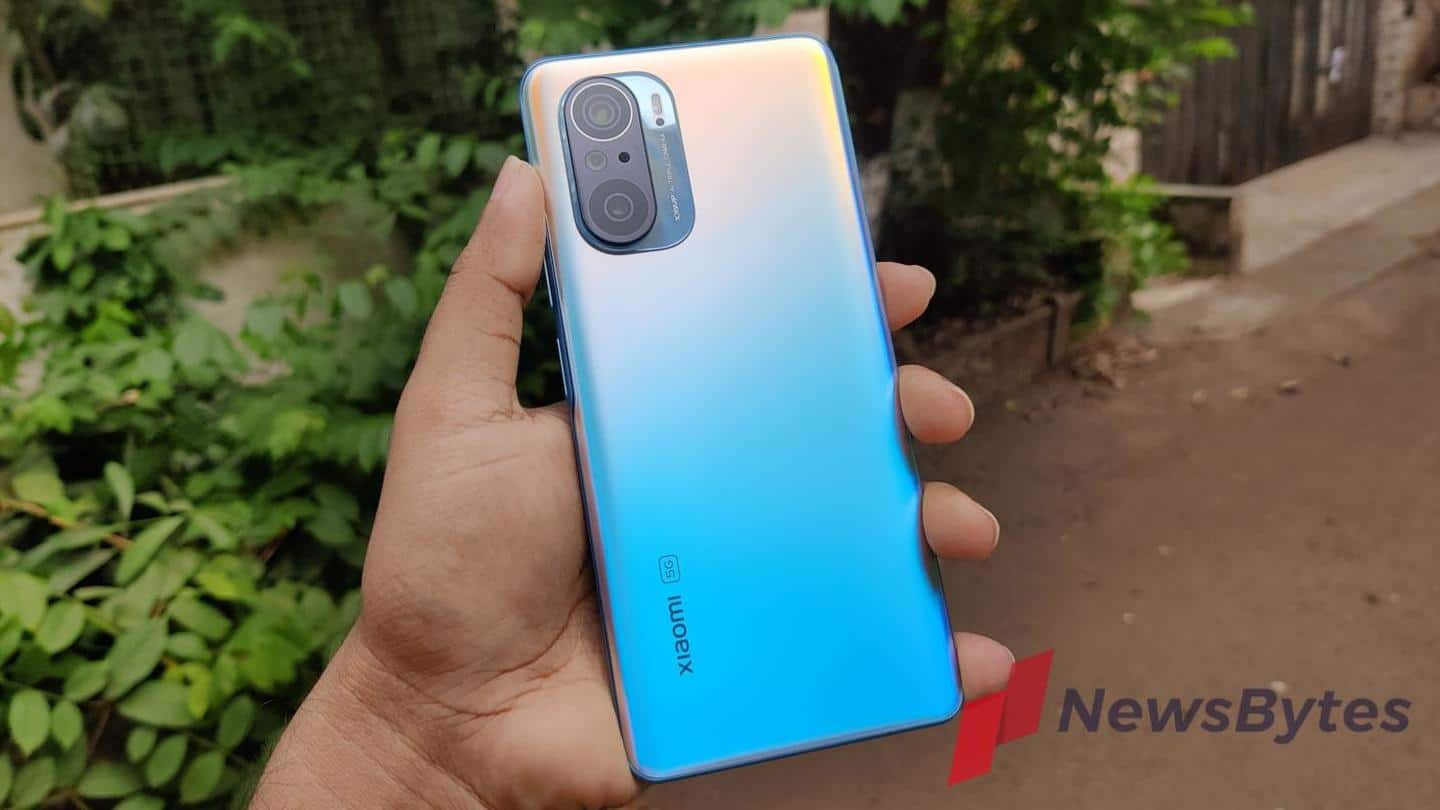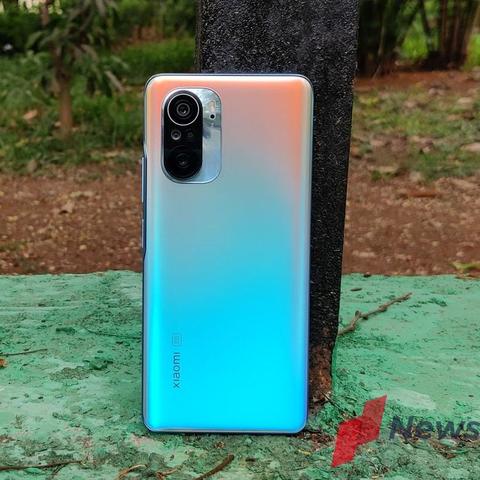
Xiaomi Mi 11X Pro Review: Premium performance at bargain price
What's the story
The Xiaomi Mi 11X Pro is a part of the Mi 11 trio pitted against three similarly specced OnePlus 9 phones. The Mi 11X Pro fits in the middle of the tier and competes directly with the OnePlus 9 (the one sans the suffixes) while costing significantly less. At an asking price of Rs. 40,000 for the 128GB variant and another Rs. 2,000 more for the 256GB one, the Mi 11X Pro matches the feature set of the OnePlus 9 while being priced nearly Rs. 10,000 less. Therein lies the irony of a company that started out as a flagship killer, being outpriced by a fellow Chinese player that has mastered the art of selling phones at razor thin margins. But does the Mi 11X Pro manage to deliver value without cutting a lot of corners? Read on to find out.
Xiaomi Mi 11X Pro: At a glance
Absolutely gorgeous
Design and Build Quality: Makes a case for no case
The Xiaomi Mi 11X Pro may not have a metal frame, but the polycarbonate and Gorilla Glass 5 sandwich design looks downright stunning. The iridescent Celestial Silver finish is a beautiful optical illusion that flirts between cyan and pink depending on how light hits it. Along with thin bezels, slim profile, hole punch camera, and gently curved edges, it's almost tragic that the slippery finish makes it necessary to hide it all behind a protective case. On the flip side, the triple camera cluster protrudes by a massive 1.8 mm and the side-mounted fingerprint scanner (although fast and accurate) is a disappointment on a phone costing as much. An in-display fingerprint scanner would have been nicer. But then you also get stereo speakers and IP53 dust and water protection. Meanwhile, the one-sided button placement is intuitive, with crisp tactile feedback, and the overall build quality is pretty solid. The 5G capable phone comes with a pair of nano-SIM slots, but no microSD expansion, so it is wiser to spend the extra Rs. 2,000 on the 256GB variant.
Super AMOLED
Display: HDR10+ capable with 1,300-nits brightness
The Xiaomi Mi 11X Pro's features a 6.67-inch ultrawide Full HD+ panel, replete with 120Hz refresh rate paired with a touch sampling rate of 360Hz. Combine that with MEMC motion interpolation technology, and the overall perception of smoothness just beggars belief. With phones achieving parity in terms of chipsets, feature such as these adds to the illusion of smoothness. But let's not forget that this is still a Samsung Super AMOLED unit, so the saturation and colors are absolutely on point. This might not be a flagship grade display, but it has goodies such as HDR10+ support with a peak brightness of 1,300-nits. The AMOLED screen stands out when watching HD content in Netflix. Not surprisingly, the display is legible outdoors even under sunlight.
Snapdragon 888
Performance: Uncompromising flagship-tier muscle
With a price-tag of Rs. 40,000, the base 128GB Mi 11X Pro variant is the cheapest way to get Qualcomm's flagship Snapdragon 888 SoC. As expected, the processor tears through benchmarks and crushes basically any app or game you throw at it. The 120Hz display with motion interpolation makes the UI and overall experience feel and look responsive. The memory and storage sub-systems hold their end of the bargain well, with 8GB of fast LPDDR5 RAM and a reasonably quick UFS 3.1 flash storage. I bumped up the graphics settings on Real Racing 3 and Call of Duty: Mobile, but nothing could faze the flagship SoC on the Xiaomi Mi 11X Pro. The only complaint was the phone getting a bit warm after about half an hour worth of gaming. The stereo speakers are loud, but the sound lacks body which is helped a bit by activating the Dolby Atmos toggle. It's really hard to find any faults with performance given the flagship chipset being offered at this price-point.
No fast charging
Battery and Software: Don't mind the bloatware
The problem with a flagship killer phone is that it also has to deal with some limitations of flagship phones. The relatively smaller 4,520mAh battery lasts a day under normal usage conditions, but enabling 120Hz display mode and including some gaming causes the monster of the Snapdragon 888 chipset to drain a significant amount of battery. Heavy users will need to top up their battery in the middle of the day. The 33-Watt quick charger manages to recharge the battery in an hour. The Xiaomi Mi 11X Pro ships with Android 11 with MIUI 12 on top, so the user interface is just like any Xiaomi phone running MIUI 12—meaning, it will have a good mix of UI features albeit with a bit of bloatware and Xiaomi apps that cannot be uninstalled. You can disable many of these during setup, but some still do slip through no matter what. I also spotted some annoying spam notifications, which serve to remind you how exactly Xiaomi delivers such terrific value.
Great selfies
Camera: Competent where it matters
The Xiaomi Mi 11X Pro's triple-camera setup comprises a 108MP primary camera, an 8MP ultrawide camera, and a 5MP "super macro" lens. Meanwhile, a 20MP front camera peers in through a hole in the display. The camera app seems unchanged from the previous versions, which means the macro lens is still hidden behind a separate menu and the AI still intelligently identifies scenes to apply the right presets. The 108MP primary snapper does a decent job of capturing photos both in daylight as well as the night, with the night mode kicking in by default to enhance photos in low lighting conditions. Unfortunately, the dynamic range and color accuracy is mediocre. You can use the Pro Color mode to make photos pop, but it dials the saturation up to comical levels. The autofocusing speed is great and details captured are impressive, thanks to the 108MP sensor pixel-binning shots down to the default 12MP storage format. You can set the photos to retain their original 108MP resolution, but what you gain in pure image size will also lead to a loss of brightness and overall fidelity afforded by pixel binning. The ultrawide sensor doesn't offer the same quality, with the image stabilization and night-time performance also being average. The macro lens is surprisingly useful for capturing close-ups without requiring the lens to be pressed against the subject. Auxiliary lenses are usually gimmicks, but this one is quite useful. The 20MP selfie camera, however, doesn't disappoint despite forcing a bit of beautification by default. Selfies come out detailed whether you're shooting in the day or night. The portrait mode is pretty impressive, with well-defined edges and beautiful background blur, in both the primary and selfie cameras. Video performance is restricted to 30fps in 8K, whereas both 4K and 1080p videos can be shot at 60fps. Video stabilization is pretty good, but expect slight graininess when shooting in lowlight conditions.
Delivering value
Conclusion: The real flagship killer
Apart from the bloatware and spammy notifications, all of which Xiaomi is promising (emphasis on this being not guaranteed) to fix in the next update, I don't see a real problem with the Xiaomi Mi 11X Pro. Sure, you lose wireless charging and in-display fingerprint scanner, but that's a value judgment you will have to make whether that's worth an extra Rs. 10,000 that the OnePlus 9 commands over the Mi 11X Pro. If you absolutely want a great UI experience at the same price, you will have to downgrade to the OnePlus 9R. And that entails compromising on the SoC and losing the flagship smartphone-grade performance. However, if you can live with the aforementioned quirks of the Mi 11X Pro, nothing comes close to offering flagship-tier performance at this price-point. We therefore wholeheartedly recommend the Xiaomi Mi 11X Pro.
